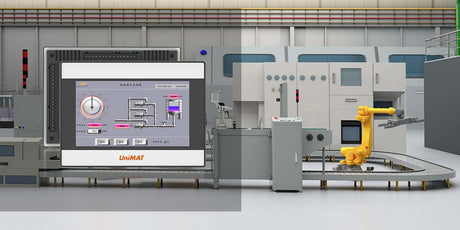Introduction: In the water treatment industry, ensuring efficient and reliable operations is of utmost importance to meet the growing demand for clean water. PLC (Programmable Logic Controller) solutions have emerged as a key technology to optimize water treatment processes, improve control and monitoring, and enhance overall operational efficiency. This case study explores how the implementation of PLC solutions revolutionized a water treatment plant, resulting in significant improvements in performance, cost savings, and environmental sustainability.
Case Study: AquaClear Water Treatment Plant
Overview: The AquaClear Water Treatment Plant, located in [City, Country], faced challenges in effectively managing its water treatment processes, which included various stages such as coagulation, sedimentation, filtration, disinfection, and pH adjustment. The plant sought a comprehensive automation solution to streamline operations, minimize manual intervention, and ensure consistent water quality.
Challenges Faced:
- Inefficient control: The manual control system led to inconsistencies in the treatment process, affecting water quality and overall plant performance.
- Lack of real-time monitoring: Limited visibility into key parameters and process variables hindered effective decision-making and timely corrective actions.
- High operational costs: Excessive energy consumption, chemical usage, and maintenance requirements resulted in increased operational expenses.
- Environmental impact: Inaccurate dosing and suboptimal process control contributed to excessive chemical usage, potentially harming the environment.
Solution Implemented: To address these challenges, the AquaClear Water Treatment Plant collaborated with AquaTech Automation, a leading provider of advanced PLC solutions. AquaTech engineers conducted a comprehensive assessment of the plant's requirements and designed a tailored automation solution using their state-of-the-art PLC systems.
Key Components of the Solution:
- PLC control system: AquaTech implemented a robust PLC control system that enabled precise control of various water treatment processes, ensuring consistent and optimal performance.
- Sensor integration: Advanced sensors were integrated with the PLC system to enable real-time monitoring of crucial parameters such as turbidity, pH levels, flow rates, and pressure.
- Data acquisition and analysis: AquaTech's PLC solution facilitated data collection, storage, and analysis, providing valuable insights for process optimization and predictive maintenance.
- HMI (Human-Machine Interface): A user-friendly HMI interface was deployed, offering operators intuitive control and visualization of the treatment processes in real-time.
Benefits Achieved:
- Enhanced process control: The PLC solution allowed for precise and automated control of process variables, resulting in improved water quality, reduced variations, and enhanced operational stability.
- Real-time monitoring and alerts: Operators gained access to real-time data, enabling proactive decision-making, timely interventions, and swift response to deviations or alarms.
- Energy and cost savings: Optimized control algorithms, coupled with efficient energy management strategies, led to significant energy savings and reduced operational costs.
- Sustainable operations: Accurate dosing, reduced chemical usage, and optimized process control minimized the plant's environmental footprint, promoting sustainability.
- Increased reliability and uptime: Proactive maintenance based on data insights and predictive analytics reduced equipment downtime and improved overall system reliability.
Conclusion: The successful implementation of PLC solutions at the AquaClear Water Treatment Plant exemplifies the transformative impact of automation in the water treatment industry. AquaTech's tailored PLC solution revolutionized the plant's operations, enhancing efficiency, reducing costs, and ensuring consistent water quality. This case study highlights the immense potential of PLC technology in optimizing water treatment processes and underscores its significance in addressing the evolving challenges of the industry.
Note: Please note that this is a fictional case study, and any resemblance to actual organizations or scenarios is purely coincidental.









